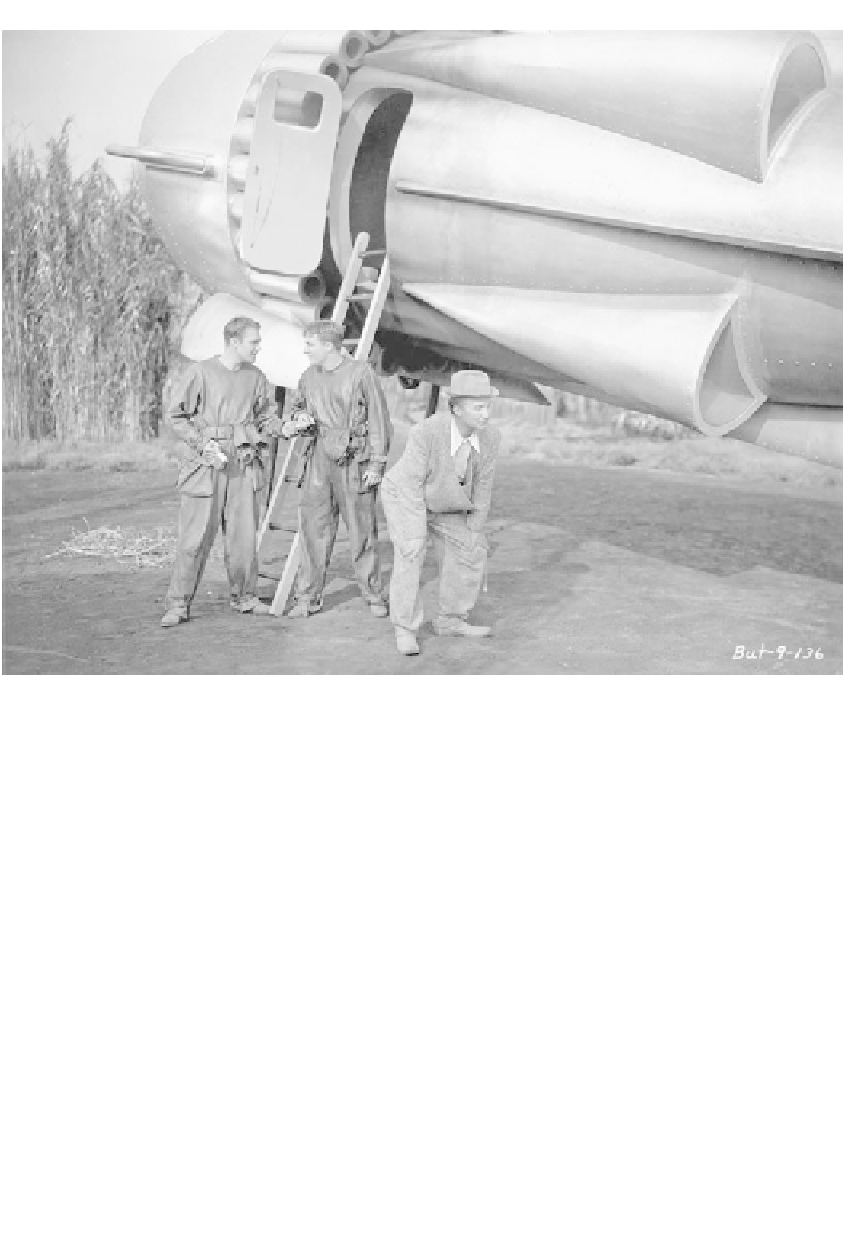Environmental Engineering Reference
In-Depth Information
Figure 3.17
Just Imagine
, 1930, directed by David Butler. In 1880, the people believed themselves to be the
'last word in speed'; but by 1930, the streets are crowded with cars and lined with lights and
telephone wires; and in 1980, the tenement houses have become 250-story buildings, connected
by suspension bridges and multi-lane elevated roads.
Single O
: Boys, I vouldn't know de old town! Vere is all de automobiles?
RT-42
: [pointing skyward] Oh, they're in the upper level.
J-21
: Hardly anyone drives a car now. They all use planes.
Single O
: It looks like someone got even with Henry Ford!
Source
: British Film Institute Stills Collection.
emissions (9.6 MtCO2) (
Figure 3.18
). Of these transport emissions, the vast majority are from
car and motorcycle emissions (46 per cent), road freight (HGVs and LGVs) (17 per cent) and
aviation is included. The allocation for London, as used in the Climate Change Action Plan
(Greater London Authority, 2007), is that half of emissions from all flights landing at London
airports are allocated to London residents' emissions. This results in the aggregate transport
emissions rising to 48 per cent. Since 2008, transport-related CO2 emissions have fallen to
9.36 MtCO2, but these figures may not be entirely compatible with the earlier ones (Transport
for London, 2011).
Per capita transport emissions are relatively low at 1.3 tonnes CO2 per person for Greater
London (2008), though there are large differences between inner London, where use of public

